Premier League at 25: Ten kits that show how much football has changed

- Published
The Premier League turns 25 this week, which means it’s still young enough to feature on BBC Three, and therefore incredibly relevant. Next.
To mark the silver anniversary, we're taking a look at 10 of the most extraordinary kits of that era.
Some are good, some are bad, some look like a sixth-former designed them in MS Paint, but each tells its own story. For most that's of the culture and fashion of the times, but there are also nods to history and of course the influence of sponsors and owners.
But one observation we can take from this list is that, kits just seem to have become a lot tighter and unforgiving to the more robust football fan over the past two and half decades.
Norwich City (Home) 1992-94 - Norfolk in the '90s
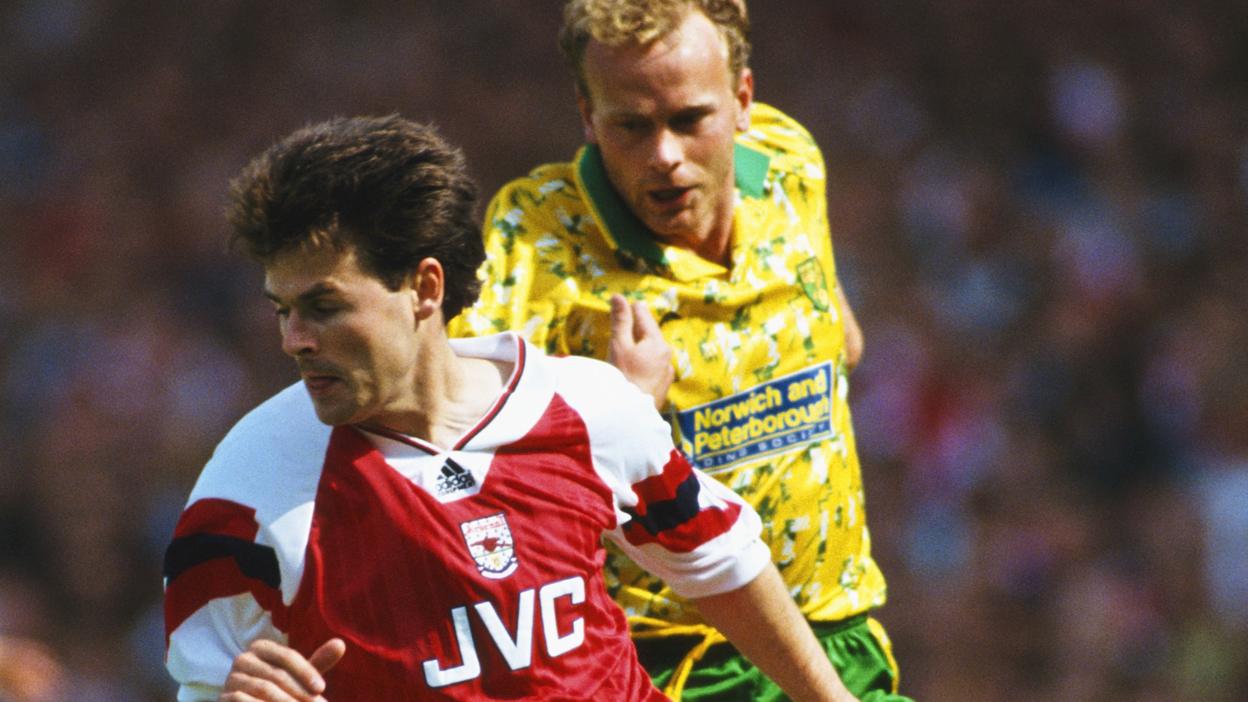
Don't quite remember Jeremy Goss? Well he's the Norwich City midfielder who netted an absolute screamer against Bayern Munich in the Uefa Cup in October 1993. The goal was perhaps the pinnacle of this most illustrious period in the Norfolk club's history. Seriously, Google it.
And while Norwich City can now be found in the Championship, back in 1992-93 they were the surprise front-runners in the Premier League's first title race.
Having finished 18th the previous year, the Canaries actually sat eight points clear at the top of the table just before Christmas but, somewhat inevitably, were hauled in by Manchester United and finished third. Essentially the Leicester City story, without the happy ending.
But what a kit to do it in. A baggy, yellow and green, hounds-tooth type number that looks like it’s been printed out on a dot matrix printer.
A nod to Norfolk's seminal role in early-90s rave culture? Perhaps not.
Manchester United (Away) 1995-96 - The Invisible Men
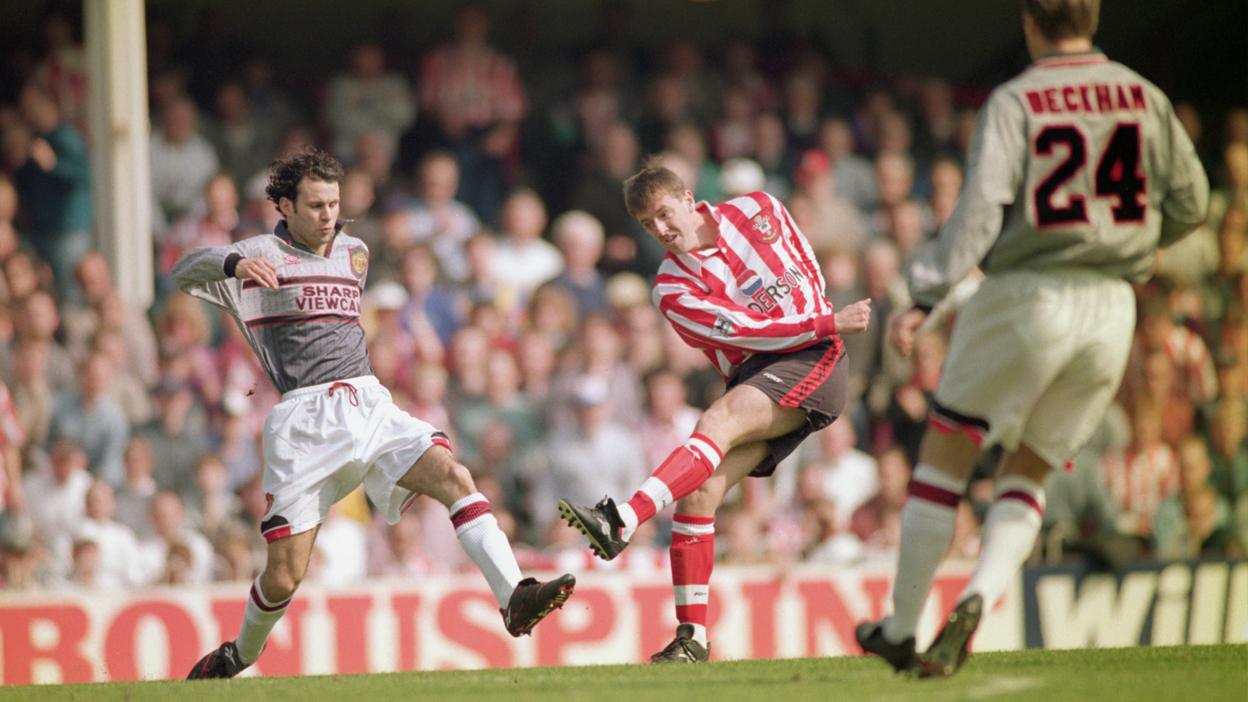
It’s April 1996, and Manchester United are 3-0 down at half-time at Southampton. They trudge off the pitch, dejected in their faded grey shirts, awaiting the inevitable 'hair-dryer' telling-off from their manager.
The second half comes and Alex Ferguson’s men appear once again, having performed a quick costume change, bedecked in blue-and-white stripes. That ill-fated grey-on-grey number is never to be seen again.
United had worn that kit four times previously – drawing once against Nottingham Forest and losing to Aston Villa, Arsenal and Liverpool, but it wasn’t just out of some weird superstition that the decision (which earned Fergie a £10,000 fine) was made. The players complained that they couldn’t pick each other out against the backdrop of the crowd.
United would lose the game 3-1 but they would go on to beat Newcastle to the title - their third win in four Premier League seasons.
The grey kit was a rare moment of chaos in United's relentless domination of the English top flight since its reincarnation as the Premier League.
Ferguson won 13 of these titles during his long reign at Old Trafford. Not sure he would be happy with United's new third kit for the 2017-18 season, external though.
Liverpool (Away) 1996-97 - The Spice Boys
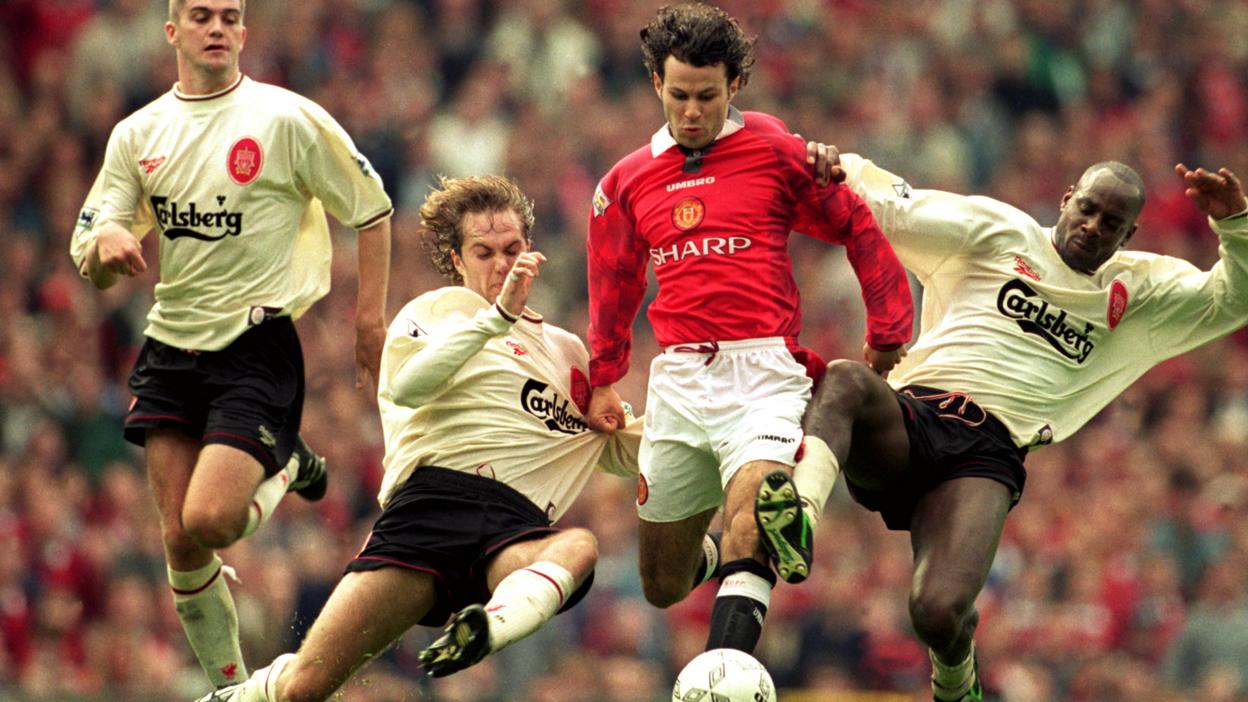
While rivals United were dominating the table, some people felt Liverpool's Robbie Fowler, Steve McManaman, Jamie Redknapp and Neil ‘Razor’ Ruddock, were more focused on enjoying the mid-1990s boom - signing modelling contracts, doing interviews for lads' mags and buying up property in the North West.
The Liverpool ‘Spice Boys’ became synonymous with those fabled white suits they wore before their miserable FA Cup final defeat against Manchester United. This away kit - not cream, but 'ecru' - came out a few months later and had echoes of that too.
In many ways, they seemed to be ushering in the footballers-are-celebrities age, regardless of success on the pitch.
Newcastle United (Home) 1995-97 - Black and white town

An absolute peach of a kit, this. One for the purists.
Block colours, baggy fit, grandad collar, typical of its era, and a local brewery sponsor. Find a mercurial talent like David Ginola to wear it, and this is pure kit-porn.
The fact that this kit also coincided with the Magpies making two cavalier but doomed-to-fail title bids under Kevin Keegan and this Toon masterpiece ticks all the right boxes.
Middlesbrough (Away) 1996-97 - International playboys
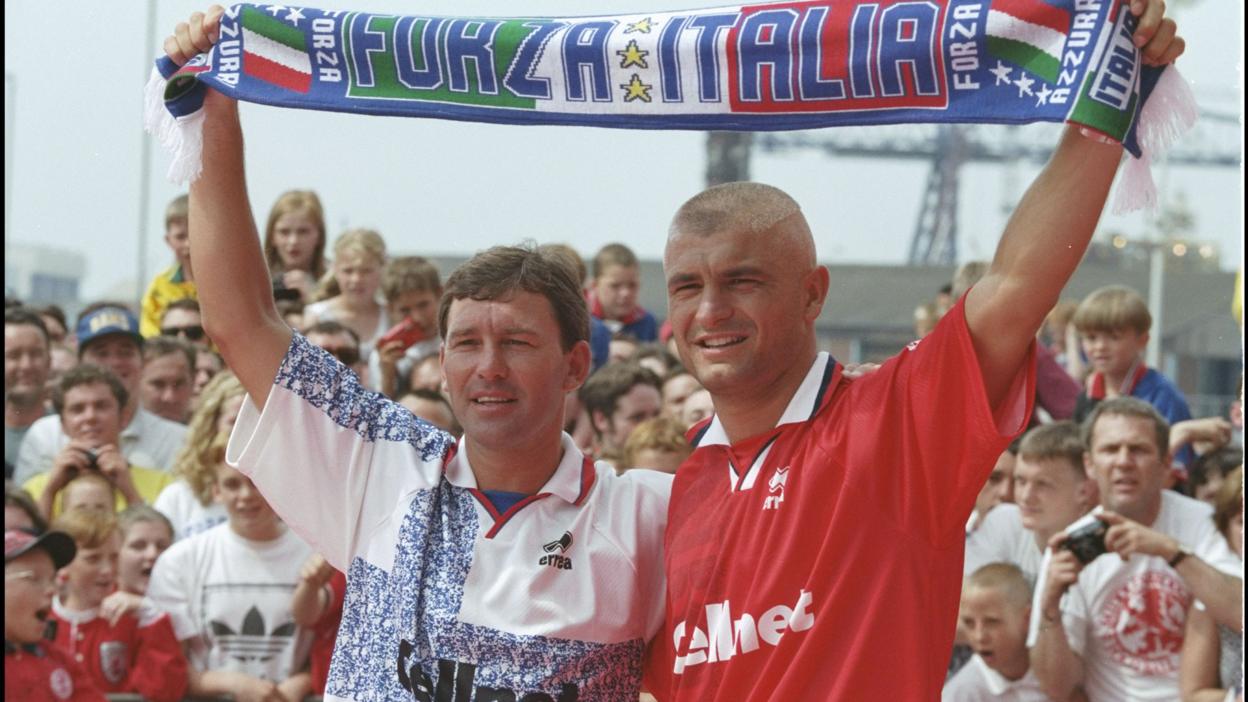
An interesting away kit and an even more interesting season.
Star striker Fabrizio Ravanelli didn't seem too keen on the kit mind, because he spent half the season trying to take it off after scoring. As the Boro fans sang: "Got grey hair and shows off his belly, oooooohh Ravanelli" (to the tune of the Macarena, FYI).
Middlesbrough marked their arrival in the top flight by starting a trend of 'unfashionable' sides splashing the cash for international talent.
After the arrival of Brazilian players Emerson and Juninho, Boro persuaded the flamboyant Italian Ravanelli to move to Teesside, and when he scored a hat-trick on his debut, things were looking up.
But despite 'the White Feather' grabbing 17 goals that season, Boro were beaten in both cup finals and were also relegated.
Other clubs weren't put off following the business model though, with the money of the Premier League helping persuade stars such as Jay-Jay Okocha and Youri Djorkaeff to turn out for Bolton.
Arsenal (Home) 2005-06 - Farewell to Highbury and the title

In 2005, as Arsenal prepared to wave farewell to their famous old ground Highbury, the club introduced this darker 'Redcurrant' home shirt to commemorate the kits worn by players during their first season at the ground.
It also marked the end of an era of incredible success for Arsene Wenger's men: the team won three Premier League titles, four FA Cups and had one 'invincible' unbeaten league campaign between 1998 and 2005.
In the darker red kit, Arsenal finished 2005-06 in fourth and moved to Emirates Stadium. Instead of first or second, finishing third or fourth became the norm for Gunners fans after that. Look on the bright side Arsenal fans, they are at the very least, consistent.
Chelsea (Away) 2007–08 - High-vis Blues
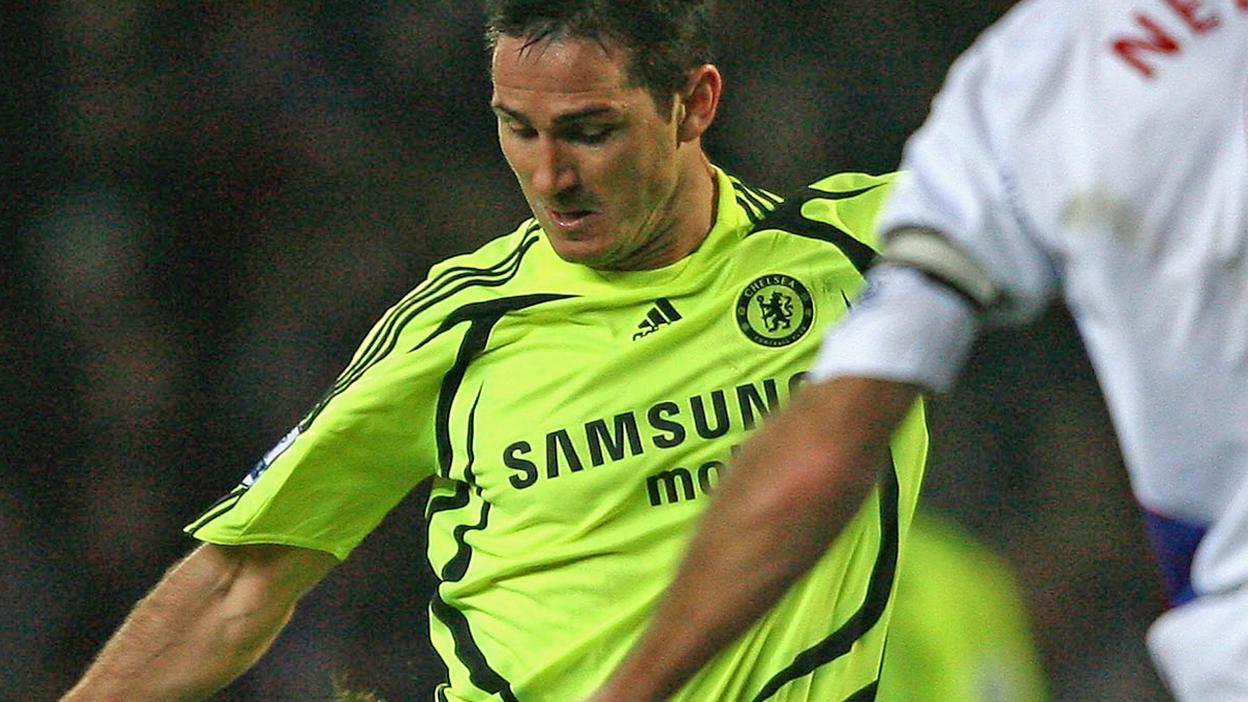
If ever a shirt summed up the Roman Abramovich era at Chelsea, it is this.
At this stage of the Roman Empire project, Abramovich's stamp was all over the London club.
He'd spent millions on the world's best players, hired 'the Special One', won the Premier League twice, and fired 'the Special One' when they finished second.
The owner apparently chose this kit himself, inspired by a similarly luminous Barcelona kit, although it looks like he may have been influenced by the nascent ‘New Rave’ movement of the time. Big fan of Klaxons perhaps?
Everton (Away) 2010-11 - Tickled pink

Another kit that had us adjusting our TV sets for Match Of The Day was Everton’s away kit for the 2010-11 season.
This luminous salmon edition certainly divided opinion. In defence of its manufacturers, it’s worth pointing out salmon pink was the colour worn by Everton during the first season they were crowned league champions in the 1890-91 season. There had been other instances since when the Toffees rocked pink – including their 1992 away kit.
Perhaps the real story here, though, is the fact Everton also released a very muted vanilla third kit in 2010. Surely it was just a back-up for all of those occasions when hot, electric pink might clash with the opposition, and absolutely nothing to do with cashing in on some easy revenue.
Either way, Everton haven’t been afraid to be brave with their kits in the past decade. The following season they launched a camouflage goalkeeper’s kit.
Manchester City (Home) 2011-12 - Agueeeeeeeeeeerooooooo!

This kit is probably most famous for the moment Sergio Aguero ripped it from his shoulders and swung it jubilantly around his head after scoring the stoppage-time winner in the most dramatic conclusion to a Premier League season.
It was a goal that brought home Manchester City's first top-division title in 44 years - and ended the decades-long shame and subordination they'd suffered at the hands of cross-town rivals United.
The kit itself, with its Abu Dhabi-based sponsor, tells the tale of how much City (and indeed other teams too) have transformed over that period.
Since 2008 the club had been bankrolled by Sheikh Mansour and City had gone from long-standing underachievers to a global footballing force. In this moment, City seemed miles away from the days when the Gallagher brothers were knocking around Maine Road in that baggy, sky blue gear.
Manchester United (home) 2015-16 - The most expensive kit of all time

The Premier League's first 25 years have seen it go from a rebranded English football competition to a huge global brand.
Games are broadcast and seen all over the world, so the kits are big business - synthetic advertising hoardings running around the pitch for 90 minutes a week.
In 2015, Manchester United signed the most expensive kit deal of all time with Adidas. The German manufacturer moved in to make those famous red (or grey) strips for an eye-watering £75m a season.
New kits are now launched by celebrities as well as players, and United have got three-stripe enthusiast Stormzy to promote their new gear recently.
This season, Chelsea began a £900m 15-year kit deal with Nike, while Man City sold a small patch of fabric on their sleeves to a tyre company for £10m.
Whether you like it or not, the Premier League is big business now and it starts all over again this weekend. What will change in the next 25 years?